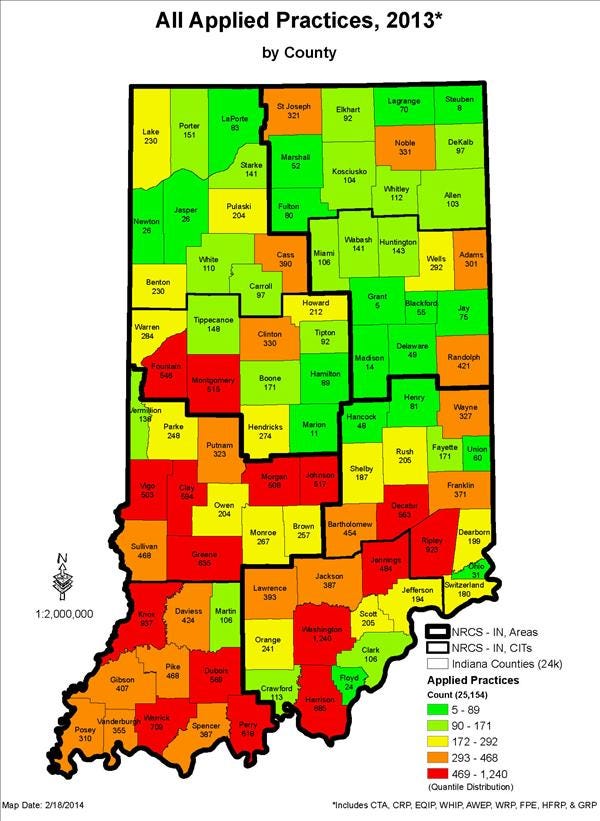Just how many soil and water conservation practices are actually implemented in Indiana each year? For 2013, the answer is 25,154. Those are practices the government provided cost-share or technical assistance for, or both. Producers likely installed some other practices without any government help.
"We've still got work to do to curb erosion, but what we are doing is getting results," says Jane Hardisty, Indiana state conservationist with the Natural Resources Conservation Service. Hardisty is a Hoosier native. She lives on the family farm near Greenfield in Hancock County.
LOADS OF CONSERVATION: Conservation practices were installed at a fast clip in Indiana last year, especially in southern Indiana.
Hardisty recently released a map showing details of practices completed in Indiana last year. The 25,154 number includes practices in all programs offered by the Farm Service Agency and NRCS. There were several counties with as many as 400 practices completed.
The highest number of practices per county tends to fall in the southern half of the state, but that's not a hard and fast rule.
For example, Clay County, which straddles Interstate 70 in west-central Indiana, was home to a very large number of conservation practices in 2013. Clay County was one of the first to promote installation of water and sediment control basins in the late '70s and early 1980s. The rolling terrain and need to prevent gully formation makes Clay County ideally suited for wascobs, which collect and drain water underground instead of over the surface. Most wascobs are designed to be farmed over.
Conservation Technical Assistance
The largest number of those 25,154 conservation jobs in 2013 involved what's called Conservation Technical Assistance, or CTA practices.

PRACTICES BY COUNTY: Bright green counties have between 5 and 89 practices; light green: 90-171; yellow: 172-292; orange: 293-468; and red: 469-1,240.
"That means we provide technical assistance but the practice is paid for by the landowner," explains Becky Fletcher, Indiana NRCS office. "Some of them are cases where our staff helped producers develop long-term plans for improving soil conservation and water quality on their farms."
It can also include cases where NRCS staff provides technical assistance for projects, but the farmer does not apply for or use government cost-share funds to complete it.
About the Author(s)
You May Also Like




